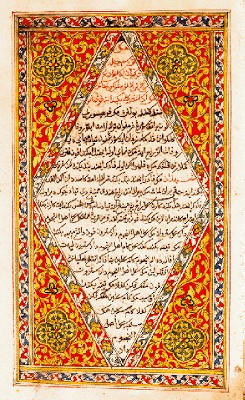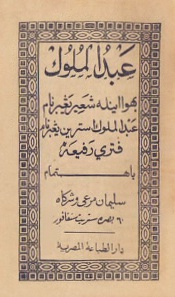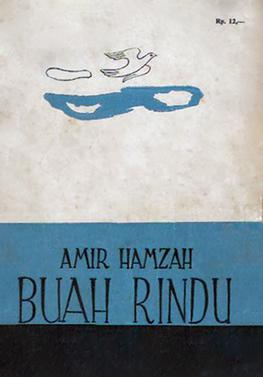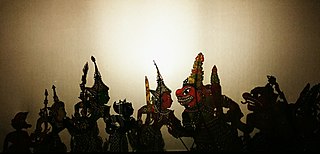
Abdullah bin Abdul al Kadir (1796–1854) also known as Munshi Abdullah, was a Malayan writer of mixed ancestry. He was a famous Malacca-born munshi of Singapore and died in Jeddah, a part of the Ottoman Empire.

The Malay Annals, originally titled Sulalatus Salatin, is a literary work that gives a romanticised history of the origin, evolution and demise of the great Malay maritime empire, the Malacca Sultanate. The work, which was composed sometime between the 15th and 16th centuries, is considered one of the finest literary and historical works in the Malay language.

Malay was first used in the first millennia known as Old Malay, a part of the Austronesian language family. Over a period of two millennia, Malay has undergone various stages of development that derived from different layers of foreign influences through international trade, religious expansion, colonisation and developments of new socio-political trends. The oldest form of Malay is descended from the Proto-Malayo-Polynesian language spoken by the earliest Austronesian settlers in Southeast Asia. This form would later evolve into Old Malay when Indian cultures and religions began penetrating the region, most probably using the Kawi and Rencong scripts, some linguistic researchers say. Old Malay contained some terms that exist today, but are unintelligible to modern speakers, while the modern language is already largely recognisable in written Classical Malay of 1303 CE.

The songkok or peci or kopiah is a cap widely worn in Brunei, Indonesia, Malaysia, Singapore, the southern Philippines, and southern Thailand, most commonly among Muslim males. It has the shape of a truncated cone, usually made of black or embroidered felt, cotton or velvet. It is also worn by males in formal occasions such as weddings and funerals or festive occasions such as the Eid ul-Fitr and Eid al-Adha holidays. In Indonesia, the peci is also associated with the nationalist movement.

Indonesian literature is a term grouping various genres of South-East Asian literature.

Malaysian literature is the collection of literary works produced in the Malay peninsula until 1963 and in Malaysia thereafter. Malaysian literature is typically written in any of the country's four main languages: Malay, English, Chinese and Tamil. It portrays various aspects of Malaysian life and comprises an important part of the culture of Malaysia.
Syair is a form of traditional Malay poetry that is made up of four-line stanzas or quatrains. The syair can be a narrative poem, a didactic poem, a poem used to convey ideas on religion or philosophy, or even one to describe a historical event.

Malay folklore refers to a series of knowledge, traditions and taboos that have been passed down through many generations in oral, written and symbolic forms among the indigenous populations of Maritime Southeast Asia (Nusantara). They include among others, themes and subject matter related to the indigenous knowledge of the ethnic Malays and related ethnic groups within the region.

Tengku Amir Hamzah was an Indonesian poet and National Hero of Indonesia. Born into a Malay aristocratic family in the Sultanate of Langkat in North Sumatra, he was educated in both Sumatra and Java. While attending senior high school in Surakarta around 1930, Amir became involved with the nationalist movement and fell in love with a Javanese schoolmate, Ilik Sundari. Even after Amir continued his studies in legal school in Batavia the two remained close, only separating in 1937 when Amir was recalled to Sumatra to marry the sultan's daughter and take on responsibilities of the court. Though unhappy with his marriage, he fulfilled his courtly duties. After Indonesia proclaimed its independence in 1945, he served as the government's representative in Langkat. The following year he was killed in a social revolution led by the PESINDO, and buried in a mass grave.

Sair Tjerita Siti Akbari is an 1884 Malay-language syair (poem) by Lie Kim Hok. Adapted indirectly from the Sjair Abdoel Moeloek, it tells of a woman who passes as a man to free her husband from the Sultan of Hindustan, who had captured him in an assault on their kingdom.

Zuber Usman was an Indonesian teacher and writer, known as an early pioneer of Indonesian literary criticism. Born in Padang, West Sumatra, he was educated in Islamic schools until 1937, after which he became a teacher. Dabbling in writing short stories during the Japanese occupation of the Dutch East Indies and the ensuing revolution, for the rest of his life Usman focused on teaching and writing about literature.

Sjair Abdoel Moeloek is an 1847 syair (poem) credited variously to Raja Ali Haji or his sister Saleha. It tells of a woman who passes as a man to free her husband from the Sultan of Hindustan, who had captured him in an assault on their kingdom. The book, with its theme of gender disguise common to contemporary Javanese and Malay literature, has been read as repositioning the hierarchy of men and women as well as the nobility and servants.

Syair Siti Zubaidah Perang Cina is a 19th-century syair (poem) by an unknown author. Following a gender disguised woman who conquers China to save her husband, the syair has been argued to be based on historical events.

Njanji Soenji is a 1937 poetry collection by Amir Hamzah. Written some time after the poet was forced to marry the daughter of the Sultan of Langkat instead of his chosen love in Java, this collection consists of 24 titled poems and pieces of lyrical prose, none of which are dated. First published in the magazine Poedjangga Baroe, the collection has been republished as a stand-alone book several times.

Boeah Rindoe is a 1941 poetry collection by Amir Hamzah. The poems date to Amir's first years in Java, between 1928 and 1935. According to Anthony Johns of Australia National University, the poems are arranged chronologically, as indicated by Amir's increasing maturity as a writer while developing the poems. The collection includes twenty-three titled poems and two untitled pieces. Ten of the poems had previously been published, including Amir's first published works, "Mabuk..." and "Sunyi".

Alamat Langkapuri was a Malay-language fortnightly publication in Jawi script, issued from Colombo, Ceylon. Alamat Lankapuri was first published in June 1869. It was the first Jawi script Malay-language newspaper printed worldwide. The newspaper was printed by lithograph.

Riau-Lingga Sultanate, also known as the Lingga-Riau Sultanate, Riau Sultanate or Lingga Sultanate was a Malay sultanate that existed from 1824 to 1911, before being dissolved following Dutch intervention.

Raja Rajeswari Setha Raman is a Malaysian poet and translator. Tamil by ethnicity. She is also a lecturer of the Teacher Education Institute, Malay Language Campus.

Malaysian folklore is the folk culture of Malaysia and other indigenous people of the Malay archipelago as expressed in its oral traditions, written manuscripts and local wisdoms. Malaysian folklores were traditionally transmitted orally in the absence of writing systems. Oral tradition thrived among the Malays, but continues to survive among Orang Asli and numerous bornean ethnic groups in Sarawak and Sabah. Nevertheless, Malaysian folklores are closely connected with classical Malay folklore of the region. Even though, Malay folklore tends to have a regional background, with the passing of time, and through the influence of the modern media, large parts of regional Malay folklore have become interwoven with the wider popular Malaysian folklore.


















